Effects Of War And The Holocaust On Jewish and Israeli Artists
The effects of war on artists are profound, especially those the grew up in homes affected directly by the holocaust
View all of Ednah’s Art About Trauma, The Holocaust, War and Terror Attacks In Israel | View Ednah’s Art About Israeli Politics, Social Issues and War | More About The Specific Wars and Social Issues In Ednah’s Art
War affects artists, it shapes their perspectives, their work and their way of processing the world. War brings chaos, loss, trauma, and an altered sense of reality, which many artists feel compelled to capture. Art becomes both a personal outlet and a social commentary, a way of mourning, documenting, and questioning the brutality of conflict. This is particularly true for Jewish and Israeli artists who lived through or are descendants of Holocaust survivors, as they often wrestle with themes of memory, trauma, and survival.
The Holocaust, as one of the most horrific events in human history, has had an enduring impact on the artistic community. Artists, both survivors and descendants, face the immense task of grappling with memories, inherited trauma, and a responsibility to remember. Survivor artists often feel compelled to document the suffering and loss, creating works that serve as testimonies to the horrors they witnessed. These pieces can be intensely emotional, combining raw depictions of despair, resilience, and the struggle to comprehend humanity’s capacity for cruelty. Many artists choose abstraction, symbolism, or surrealism to convey these complex themes, as traditional realism can fall short of expressing the depth of their pain.
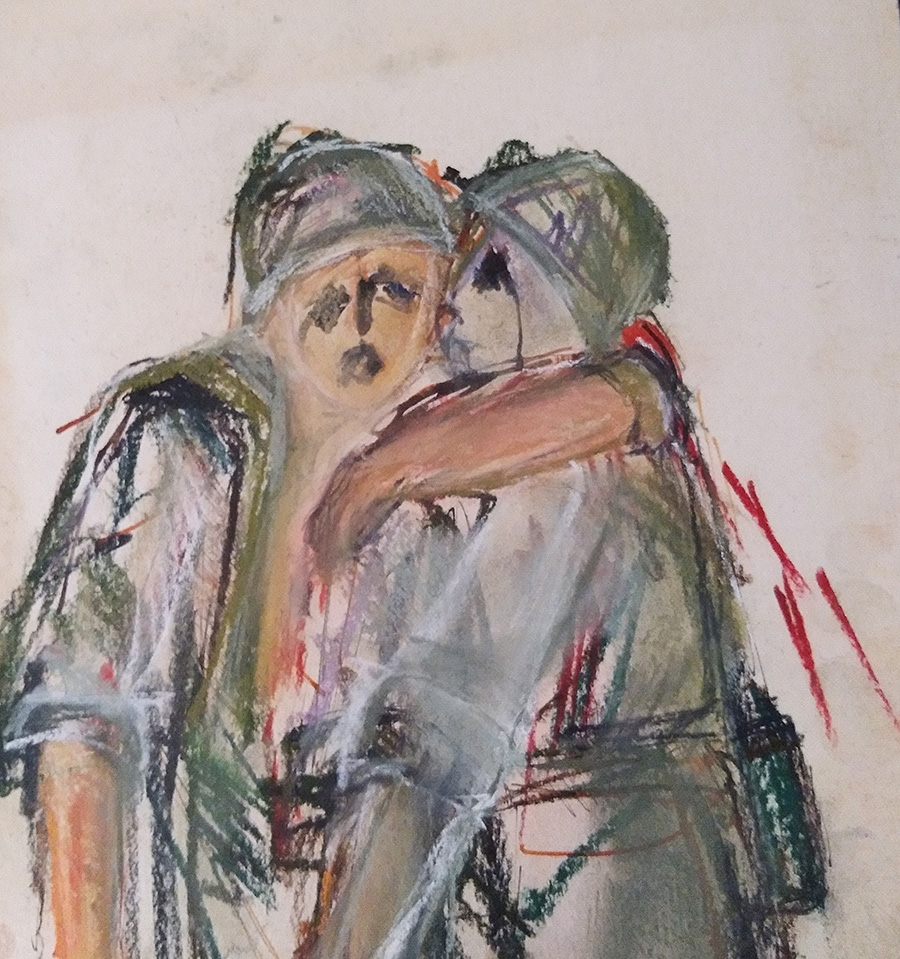
The silence about the Holocaust, particularly in families of survivors, often reflects the profound psychological scars left by the trauma. Survivors frequently avoided speaking about their experiences as a coping mechanism, wishing to shield their children from the horrors they endured. For them, silence became a way of protecting their families from the painful past and moving forward. This silence, however, had its own consequences, often creating a gap in understanding between generations and leaving children with an undefined sense of inherited trauma. In many cases, these unspoken experiences manifested in other ways—through fear, anxiety, and emotional tension that permeated daily life.
For the children of Holocaust survivors, this unarticulated trauma often found expression through creative means. Some second-generation artists delve into the Holocaust indirectly, interpreting familial silence and the psychological weight of memory. These artists seek to bridge the silence with imagery that speaks the words their parents could not. By doing so, they honor their heritage, break the cycle of silence, and offer a voice to collective suffering that might otherwise remain suppressed.

Through their work, artists impacted by war and the Holocaust not only commemorate their experiences and those of their communities but also invite reflection on universal themes of suffering, resilience, and remembrance.
The Jewish Israeli Artists
There is also a connecting thread among Jewish and Israeli artists, often woven from shared themes of history, resilience, and identity. However, there are also distinct differences shaped by cultural, regional, and historical influences that set them apart.

Jewish Artists:
Jewish artists from around the world share a common cultural heritage that often informs their work. Many explore themes tied to Jewish history, tradition, and values. For those directly or indirectly impacted by the Holocaust, questions of memory, loss, and survival resonate deeply.

Some Jewish artists also incorporate religious or cultural symbols like the Star of David, menorahs, or Hebrew text. Their work often reflects the challenges and triumphs of Jewish life and identity, regardless of their geographical location.
Israeli Artists:
Israeli artists have a unique perspective rooted in the complexities of life in Israel, which often includes themes of homeland, conflict, and survival in a modern, yet ancient, land. The Israeli experience encompasses the effects of continual conflict, political tension, and the longing for peace, which are prominent in much of their art.
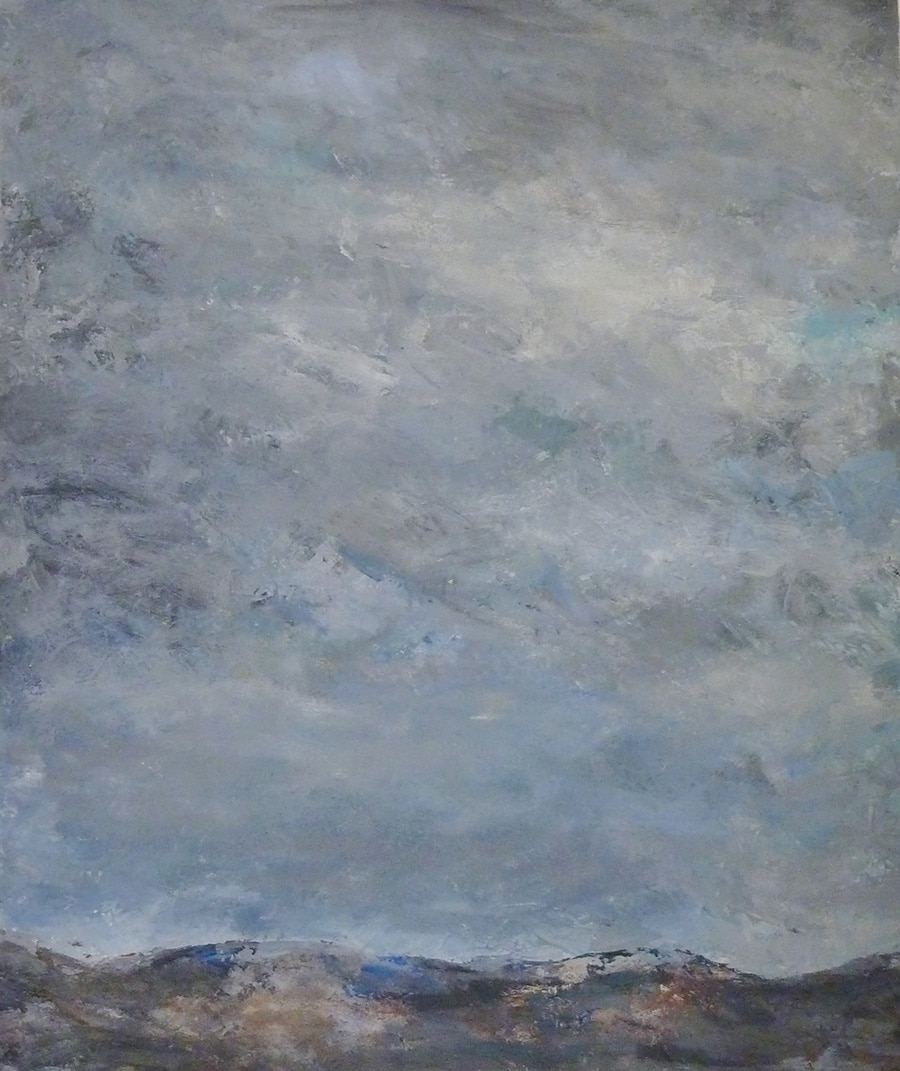
Many Israeli artists address the intersections of identity in a country with diverse immigrant populations and explore issues of place, identity, and nationhood, making their work both deeply personal and political. The land itself—a mix of historical landmarks, deserts, and modern cities—becomes a recurring element in many Israeli works, adding a distinct environmental flavor to their art.
The Intersection of Jewish and Israeli Art:
For Jewish Israeli artists, these layers of identity combine to create an artistic tradition that is both globally Jewish and specifically Israeli. This dual identity allows them to navigate broad themes like diaspora, belonging, resilience, and cultural survival, while also addressing specific Israeli realities.
Artists like Ednah, for example, draw from both her Jewish heritage and her life experiences in Israel. Particularly regarding war and the Holocaust, to create art pieces that carry universal significance but are deeply tied to Israel’s social and historical fabric.
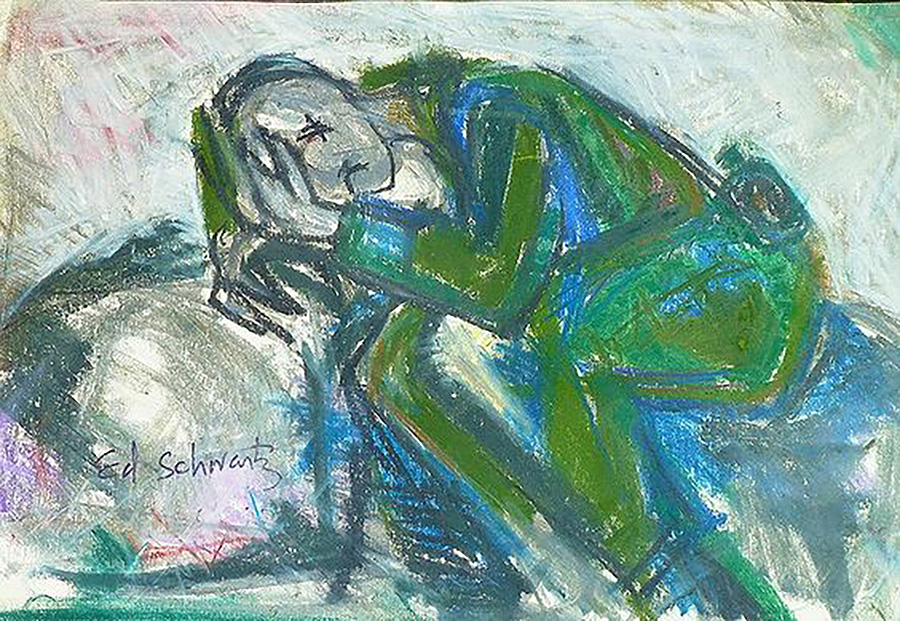
In sum, while Jewish and Israeli artists may overlap in exploring shared themes of memory, identity, and resilience, Israeli artists often bring a unique regional perspective, reflecting the day-to-day realities and cultural landscape of Israel. The blend of universal Jewish themes with the specific Israeli context offers a rich tapestry that distinguishes the work of these artists in the broader art world.
How did the Holocaust affect art?
The Holocaust had a profound and lasting impact on art, reshaping creative expression for generations. Artists who survived the Holocaust, witnessed it from afar, or were born to survivors approached the subject with deep sensitivity, grappling with themes of memory, humanity, and trauma. In the decades following the Holocaust, it became a central theme for many artists, influencing a wide range of styles and mediums. The legacy of the Holocaust has not only changed what art depicts but also how it is perceived as a vehicle for memory and moral reflection.
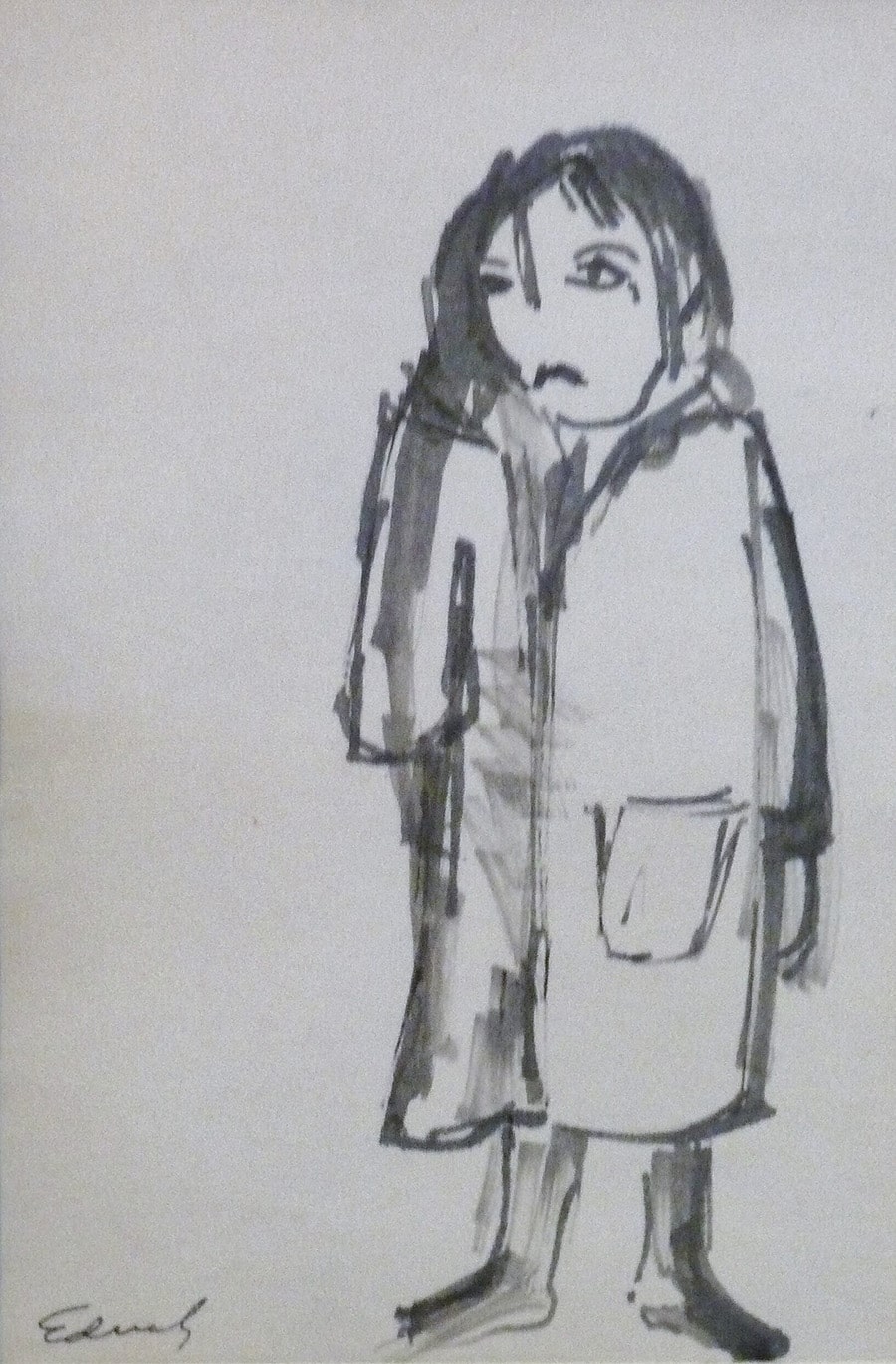
One powerful aspect of Holocaust art is its function as testimony and witness. Many Holocaust survivors felt a deep compulsion to document their experiences, often driven by a sense of duty to bear witness to the atrocities they endured. Works from artists like Charlotte Salomon and Felix Nussbaum serve as personal records of life before and during the Holocaust. This art is not only an emotional testament but also a historical document, depicting scenes from concentration camps, ghettos, and transports with haunting immediacy. Through this form of art, survivors create an enduring record, preserving their memories for future generations and ensuring that the suffering they and others endured will not be forgotten.
The Holocaust also introduced recurring themes of memory and trauma into art. For both survivors and the “second generation” (children of survivors), the Holocaust became a defining part of their identity, shaping their worldviews and their creative work. The trauma was often too overwhelming to capture directly, leading many artists to use abstraction, symbolism, and surrealism to express the inexpressible. Fragmented forms, distorted human figures, and ghostly landscapes became common ways of representing the fractured human psyche in the aftermath of genocide. Artists like Anselm Kiefer, born in post-war Germany, grappled with collective guilt and memory through massive, somber works that explore the weight of inherited trauma.
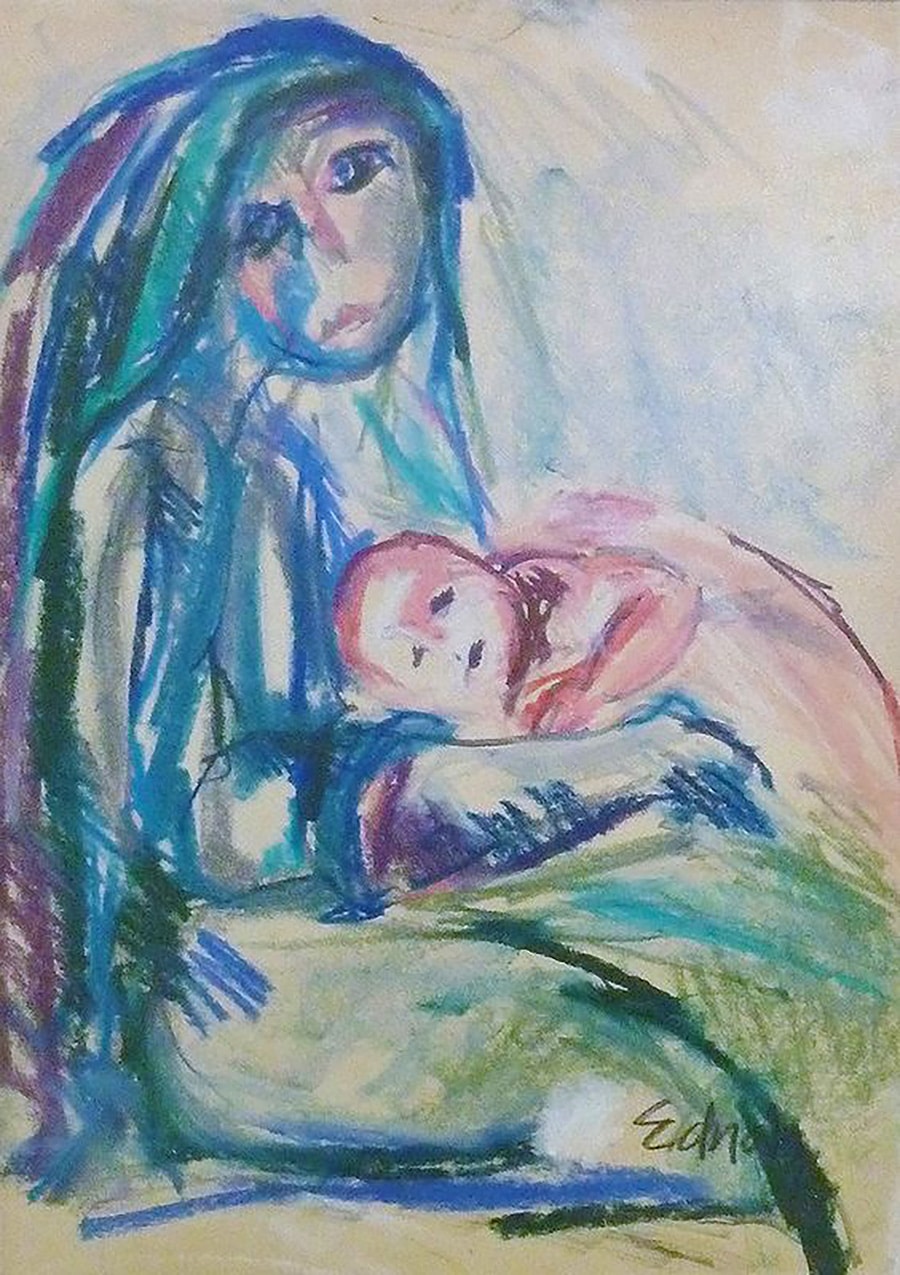
The Holocaust raised existential questions about human nature, morality, and the capacity for both good and evil—questions that became key themes in post-Holocaust art. For many artists, the Holocaust shattered beliefs in progress and humanism, leading them to explore themes of despair, survival, and moral ambiguity. Samuel Bak, for example, populated his surreal landscapes with broken symbols and distorted figures, reflecting the disorientation and existential questioning that followed such devastation. Art after the Holocaust often reflects a fundamental shift in how humanity is viewed, moving from idealized forms to distorted, scarred figures and landscapes that symbolize both the vulnerability and resilience of the human spirit.
Symbolism and metaphor became essential tools for artists grappling with the Holocaust, as traditional realism could not fully capture the depth of suffering and loss. Many artists turned to symbolic representations such as candles, broken dolls, barbed wire, and empty landscapes to invoke the absence of life and the presence of unspeakable violence. Sculptures, paintings, and even architecture took on metaphorical significance. The Holocaust Memorial in Berlin, designed by Peter Eisenman with its labyrinth of concrete slabs, conveys the enormity of loss and the isolation experienced by victims and survivors. By using symbolism, artists invite viewers to feel rather than merely observe, creating an emotional experience that transcends words.
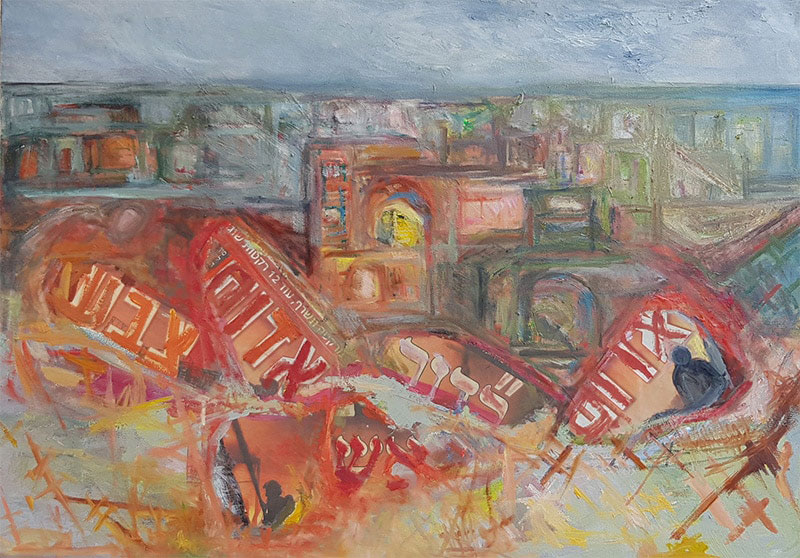
For survivors and future generations alike, art also serves as a means of remembrance, keeping alive the memory of those who perished and educating the public about the Holocaust. Artists like Yehuda Bacon, a survivor of Auschwitz, use their work to convey their stories to new generations, ensuring the Holocaust is remembered even as the number of living witnesses dwindles. Art is particularly powerful in this role because it communicates across cultures and languages, making the Holocaust accessible to a broad audience. Holocaust memorial art and museum exhibitions are also educational tools, offering a direct, emotional experience of Holocaust history that transcends textbooks and brings the human impact of these events to life.
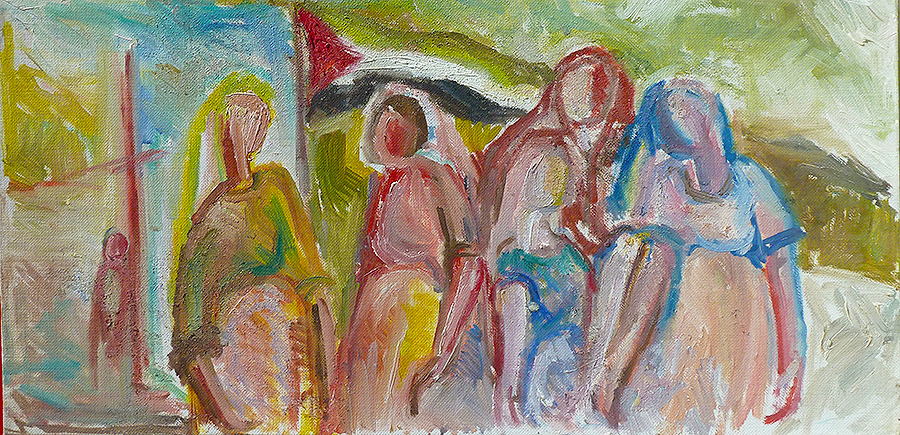
The impact of the Holocaust on art was so significant that it influenced broader movements in postmodern and contemporary art. The trauma and horror of the Holocaust pushed art beyond traditional forms and narratives, encouraging experimentation with abstraction, mixed media, and non-linear storytelling. Even today, artists continue to explore themes of displacement, identity, and inherited trauma, reflecting the Holocaust’s lasting impact on collective consciousness and the evolution of art. This legacy has therefore transcended generations, embedding itself in art movements and shaping creative expression on a global scale.
In sum, the Holocaust fundamentally altered the trajectory of art, establishing it as a powerful means of witness, memory, and moral reflection. Through their emotive works, artists continue to grapple with the Holocaust’s legacy, honoring the memories of those lost and ensuring that its lessons endure.
Who are some of the famous Jewish / Israeli artists who were affected by war in Israel?
Several prominent Jewish and Israeli artists have been deeply influenced by the experiences of war and conflict in Israel. Their work often reflects themes of survival, resilience, memory, and the psychological toll of living in a region marked by political tension. These artists have become important figures in the art world, using their work to process trauma, comment on social issues, and capture the spirit of a people shaped by both history and the realities of modern conflict.
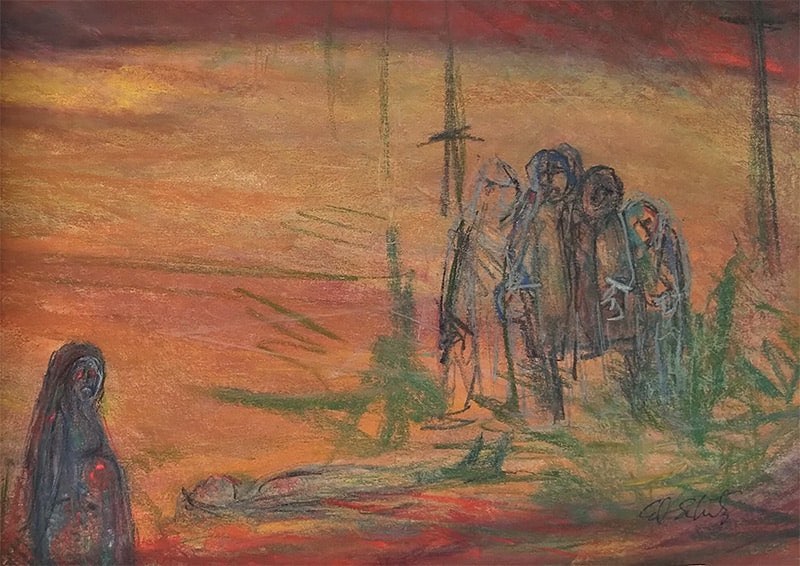
Here are some of the notable artists:
- Yosl Bergner – Yosl Bergner, an Austrian-born Jewish painter who emigrated to Israel in the 1950s, is celebrated for his work that grapples with themes of displacement, survival, and resilience. His paintings often depict the struggles of the Jewish people, symbolizing suffering and endurance through surreal, often haunting imagery. Bergner was deeply affected by the trauma of World War II and the Holocaust, and his work reflects a profound empathy for those impacted by war and violence. His use of symbolism and expressive figures often evokes the collective experience of conflict and memory.
- Menashe Kadishman – Menashe Kadishman, a renowned Israeli sculptor and painter, is best known for his work centered on themes of sacrifice and mourning, often in relation to the Israeli experience of conflict. One of his most famous installations, Shalechet (Fallen Leaves), features thousands of metal faces spread across the floor, symbolizing loss and remembrance. His series of “sacrificial lamb” paintings and sculptures also draws on biblical symbolism, invoking Israel’s sense of sacrifice and struggle for survival. Kadishman’s work has been widely interpreted as a commentary on the ongoing conflicts in the Middle East and the cost of war.
- Micha Ullman – Israeli sculptor and installation artist Micha Ullman explores themes of memory, history, and conflict, often using minimalist forms to express the weight of absence and loss. Ullman’s works frequently reference the experiences of Jews in Israel and the shadow of the Holocaust. One of his most famous pieces, Library in Berlin, is a stark underground room of empty bookshelves that symbolize the loss of Jewish knowledge and culture during the Holocaust. His works resonate deeply with the Israeli experience, embodying the complexity of memory and the scars of conflict on collective identity.
- Moshe Gershuni – Moshe Gershuni, an Israeli painter and sculptor, became known for his politically charged works that challenge and comment on Israeli nationalism, war, and the Holocaust. His paintings often incorporate Hebrew text and religious imagery, examining the intersection of Jewish identity and the violence of war. Gershuni’s art evolved from abstract expressionism to more personal, introspective works that confront the harsh realities of Israeli life, including the trauma of ongoing conflict and the moral questions it raises. His later works are often raw and emotive, reflecting a deeply personal reaction to both Jewish heritage and contemporary political issues.
- Dina Merhav – Sculptor Dina Merhav, who immigrated to Israel from Yugoslavia, is known for her large-scale metal sculptures that often depict themes of resilience and hope amid struggle. As a Holocaust survivor, her art carries a profound sense of endurance, symbolizing rebirth and transformation. Her works are influenced by Israel’s landscape and history, with the phoenix and other mythological creatures frequently appearing as symbols of survival and regeneration. Merhav’s sculptures speak to the strength of the human spirit and the quest for peace in the face of adversity.
- Edna Hibel – Though not exclusively an “Israeli artist,” Edna Hibel, an American-Jewish painter, explored themes connected to Jewish identity, family, and the resilience of the human spirit. Her travels to Israel deeply influenced her work, and she created many pieces that reflect her empathy for those affected by war and displacement. Hibel’s portraits, particularly of mothers and children, evoke a sense of compassion and a desire for peace, offering a gentle counterpoint to the harsh realities faced by many in the region.
- Avigdor Arikha – Arikha, a Romanian-born Israeli painter, survived the Holocaust and later moved to Israel, where he became a significant figure in Israeli art. His work reflects the trauma of his early experiences, focusing on themes of mortality, survival, and the human condition. Although his style evolved from abstract to figurative, his art always retained a sense of intimacy and introspection. Arikha’s exploration of light and shadow can be seen as a metaphor for the contrasts in life, reflecting both suffering and resilience.
- Nahum Tevet – Tevet, an Israeli installation artist, is known for large-scale installations that explore themes of structure, displacement, and the complexity of human experience in Israel. Although less overtly political, Tevet’s works often reflect the tension and fragmentation that define Israeli life. His use of fragmented shapes and industrial materials subtly alludes to the experience of conflict and the psychological impact of living in a region where identity and survival are continually negotiated.
Each of these artists has been shaped by Israel’s turbulent history, expressing through their work a range of emotions and perspectives on the impact of war, conflict, and cultural resilience. Their contributions help create a rich, multi-dimensional picture of the Israeli and Jewish experience, resonating with universal themes of survival, hope, and the search for peace.
Who are some of the famous Jewish / Israeli artists who were affected by the holocaust?
Many Jewish and Israeli artists have created deeply moving and reflective work inspired by their experiences of the Holocaust. These artists, whether survivors themselves or shaped by the trauma inherited from that period, have expressed the complex legacy of the Holocaust in various ways, often dealing with themes of loss, memory, resilience, and the struggle to rebuild life and identity.

Here are some notable artists whose work has been profoundly shaped by the Holocaust:
- Samuel Bak – Bak, a Lithuanian-born painter and Holocaust survivor, began drawing while hiding in the Vilna Ghetto as a young boy. After losing most of his family during the Holocaust, he immigrated to Israel in the late 1940s and later settled in the United States. Bak’s surreal and symbolic paintings often depict fractured and reassembled forms, symbolic landscapes, and imagery of ruins, evoking the brokenness and resilience of the Jewish people. His work often includes objects like broken dolls, barren trees, and fragmented faces, reflecting the trauma and survival associated with the Holocaust.
- Charlotte Salomon – Salomon, a German-Jewish artist, is known for her autobiographical series Life? or Theatre?, a unique blend of visual art and narrative that captures her experiences leading up to the Holocaust. While she did not survive the Holocaust (she was killed at Auschwitz in 1943), her series remains a powerful testimony to her life and the pain of Jewish persecution. Her work combines gouache paintings with text and music notations, creating a vivid and haunting portrayal of Jewish life in Europe before and during the rise of the Nazi regime. Her works provide a glimpse into the anxieties and struggles faced by Jews in Germany during that era.
- Felix Nussbaum – Nussbaum was a German-Jewish painter whose works captured the despair and anxiety of living as a Jewish artist under the Nazi regime. His paintings often depict isolation, fear, and the ever-present threat of deportation and death. One of his most haunting works, Self-Portrait with Jewish Identity Card, painted shortly before his arrest and eventual deportation to Auschwitz, portrays him holding his Jewish ID card with a mix of defiance and fear. Nussbaum’s paintings serve as a poignant record of his last years, conveying the intense fear and alienation experienced by many European Jews during the Holocaust.
- Yehuda Bacon – Czech-born Yehuda Bacon survived Auschwitz and later moved to Israel, where he became a painter, sculptor, and educator. His artwork focuses on the Holocaust, and he has produced a series of drawings and paintings based on his memories of life in the concentration camps. Bacon’s works are deeply personal and symbolic, depicting skeletal figures, barbed wire, and ghostly landscapes that evoke the pain and emptiness left by the Holocaust. His art serves as both a personal catharsis and a commitment to memorializing the suffering and resilience of those who endured the Holocaust.
- Shmuel (Samuel) Willenberg – Willenberg, a Polish-born artist and Holocaust survivor, was one of the few survivors of the Treblinka extermination camp. He later moved to Israel and dedicated much of his life to creating sculptures and reliefs that depict scenes from the Holocaust, including the horrors he witnessed at Treblinka. Willenberg’s sculptures are often stark and direct, showing figures in moments of anguish, struggle, and resistance. His work functions as a testament to the resilience of survivors and as a memorial to those who perished in the Holocaust.
- Mark Rothko – While Mark Rothko did not directly experience the Holocaust (he immigrated to the United States from Russia as a child), the trauma of Jewish suffering and the existential questions raised by the Holocaust strongly influenced his work. Rothko’s use of intense, brooding colors and expansive fields of color is often interpreted as a reflection of spiritual questioning and the contemplation of mortality. Although he is primarily associated with Abstract Expressionism, his deeply emotional works resonate with themes of loss and resilience that speak to the post-Holocaust era and the Jewish collective memory.
- David Olère – Olère, a Polish-French Jewish artist, was a survivor of Auschwitz and one of the few artists who documented the atrocities of the camps firsthand. He worked as a Sonderkommando (a prisoner forced to work in the crematoria), and after the war, he produced detailed and harrowing images that depicted the brutal reality of life and death in Auschwitz. His sketches and paintings show scenes from the gas chambers, crematoria, and barracks, capturing the horrors he witnessed with a raw, unfiltered intensity. Olère’s work is considered one of the most graphic and visceral testimonies to the Holocaust, offering an invaluable historical record.
- Roman Halter – Halter, a Polish-born Jewish artist and Holocaust survivor, immigrated to the UK after the war and eventually became a painter and stained-glass artist. His work often incorporates symbols of suffering, survival, and faith, drawing heavily on his Holocaust experiences. His stained-glass windows and paintings frequently feature Jewish iconography, conveying the pain of loss while celebrating resilience and faith. Halter’s art is both a personal expression of survival and a tribute to those who were lost.
- Mordecai Ardon – Ardon, a Polish-born Israeli artist, lived through World War II and was deeply affected by the Holocaust. Though he was not in Europe during the Holocaust, his work often addresses themes of Jewish suffering and memory, using abstract and symbolic forms to evoke the emotional weight of the Holocaust. His paintings are filled with rich colors and powerful symbols, such as Hebrew letters and biblical references, and often reflect the profound grief and loss experienced by the Jewish people. Ardon’s work can be seen as a spiritual and philosophical exploration of Jewish identity in the wake of immense tragedy.
- Marc Chagall – Chagall, a Russian-French Jewish painter, was deeply affected by the Holocaust and World War II, especially as many members of his community and extended family perished. His later works took on darker, more somber tones, often incorporating imagery of suffering and exile. Chagall’s iconic stained-glass windows and paintings include Jewish and biblical symbols and reference the Holocaust through motifs of crucifixion, displacement, and angels in mourning. His pieces evoke a deep sadness but also a sense of resilience and continuity in Jewish heritage and faith.
These Jewish and Israeli artists, whether survivors, witnesses, or deeply connected to the Holocaust through heritage—have contributed immensely to the collective memory of the Holocaust. Their works reflect both the trauma of this history and the endurance of the human spirit, providing powerful visual narratives that honor the experiences of those who lived through it.
Through their art, Jewish and Israeli artists remind us of the Holocaust’s impact, keeping alive the memory of those who perished and ensuring that the lessons of that dark period are not forgotten.